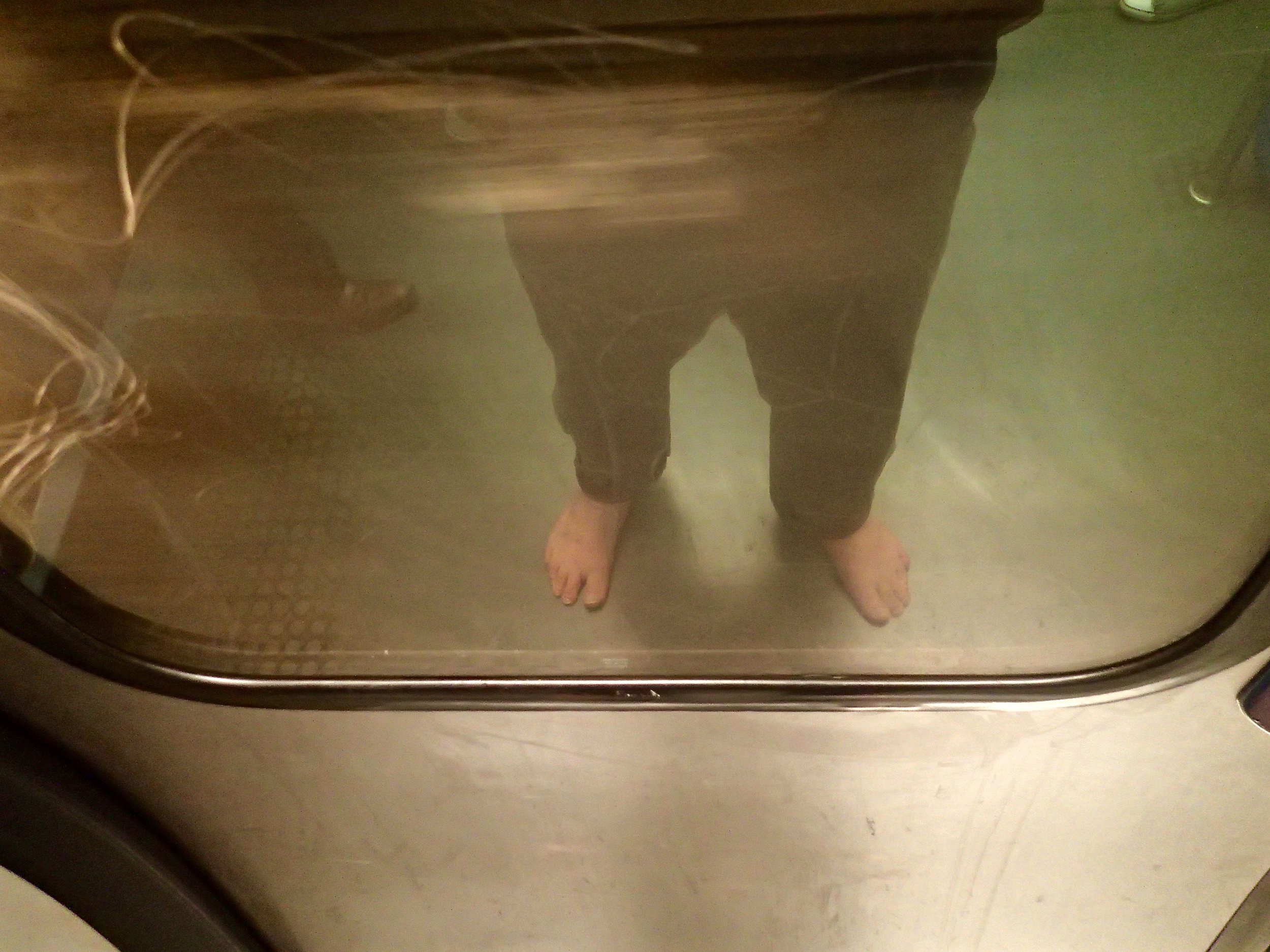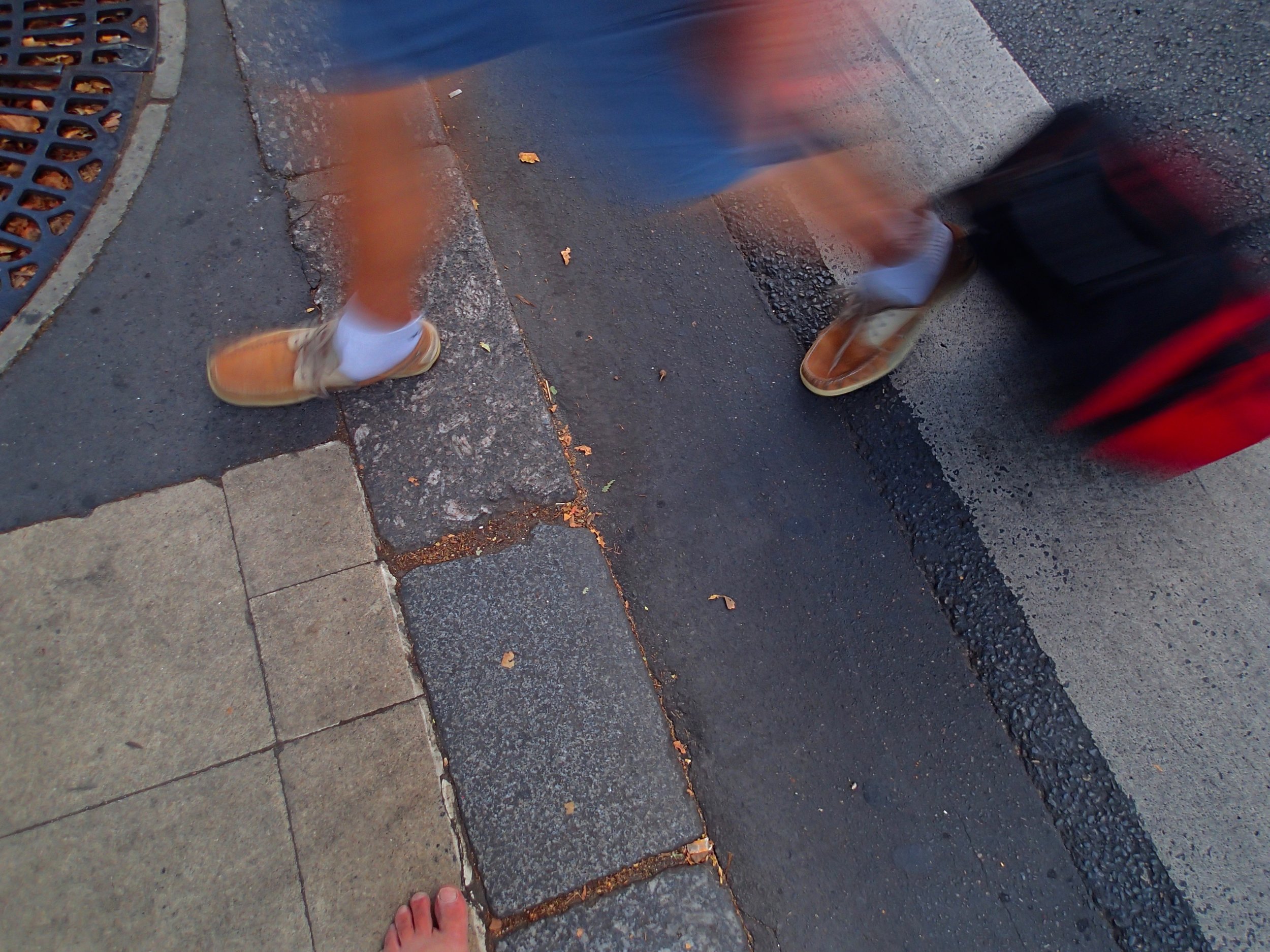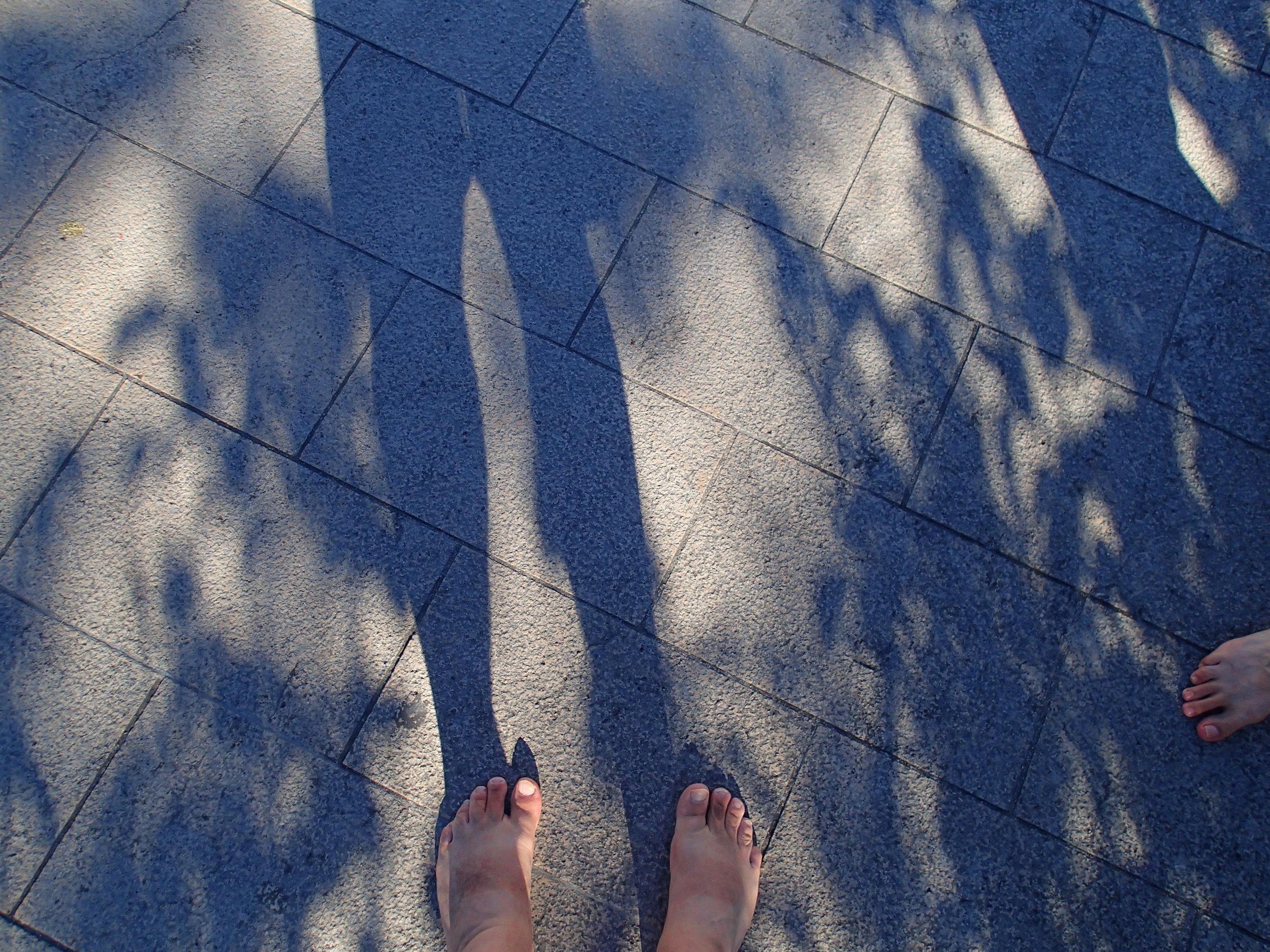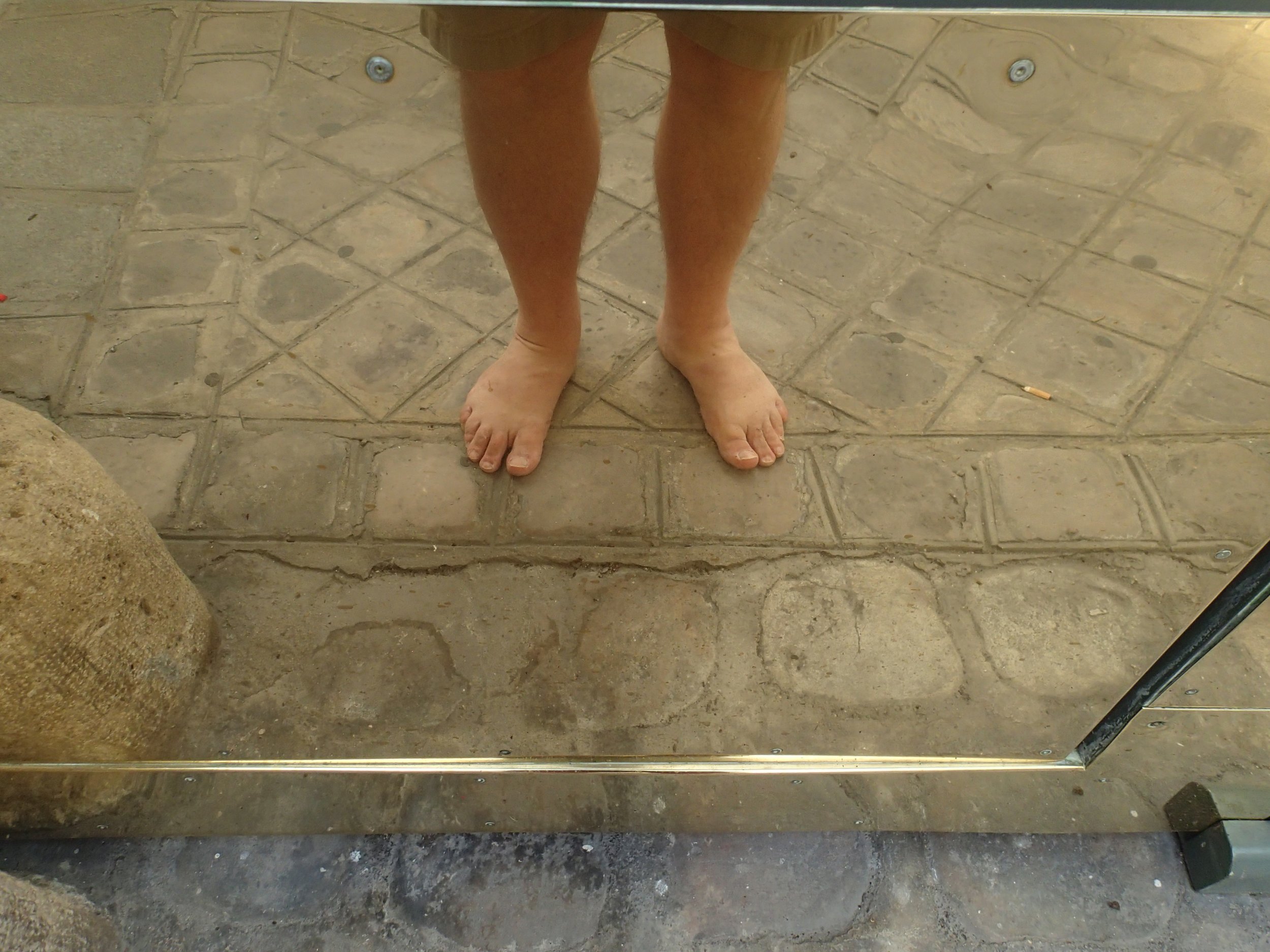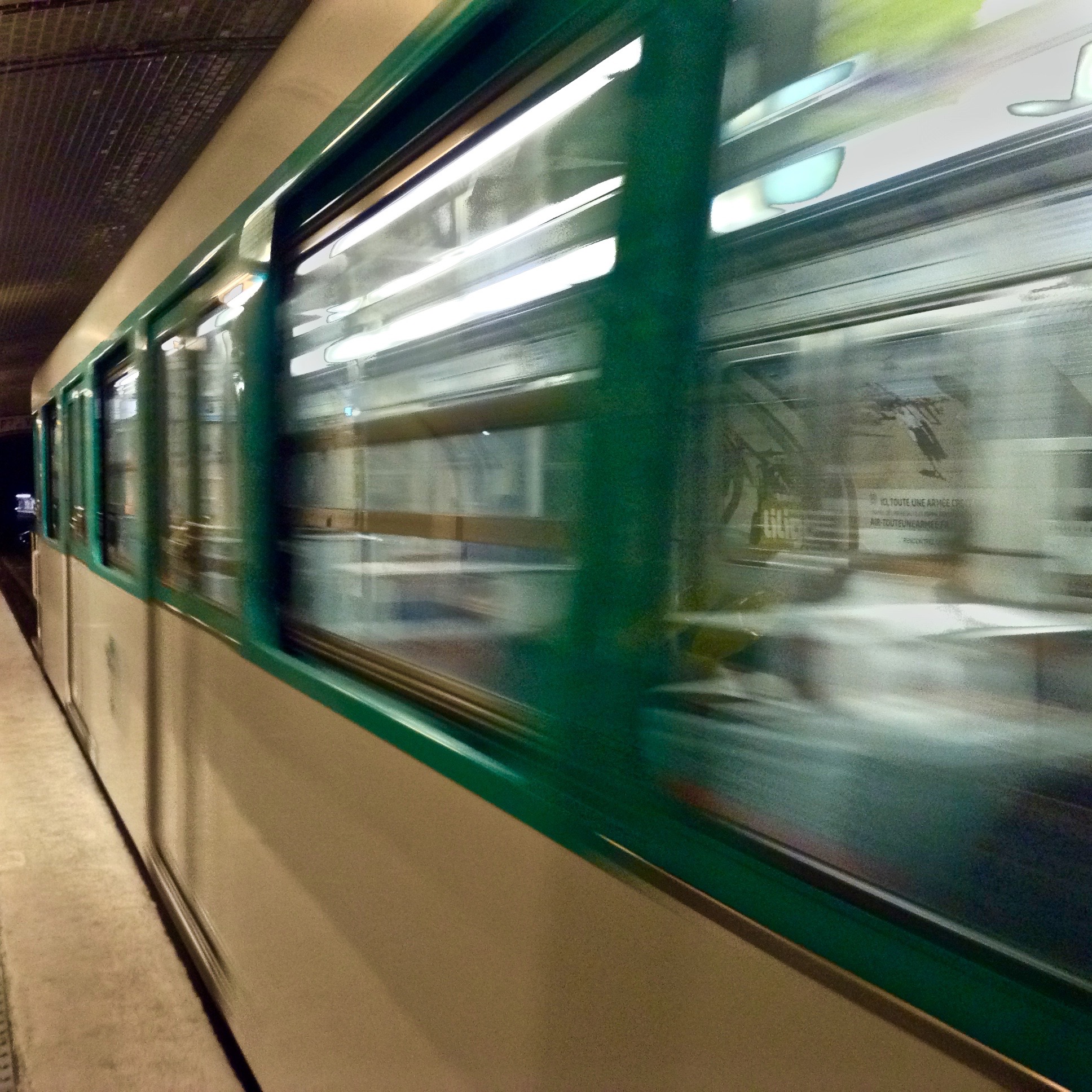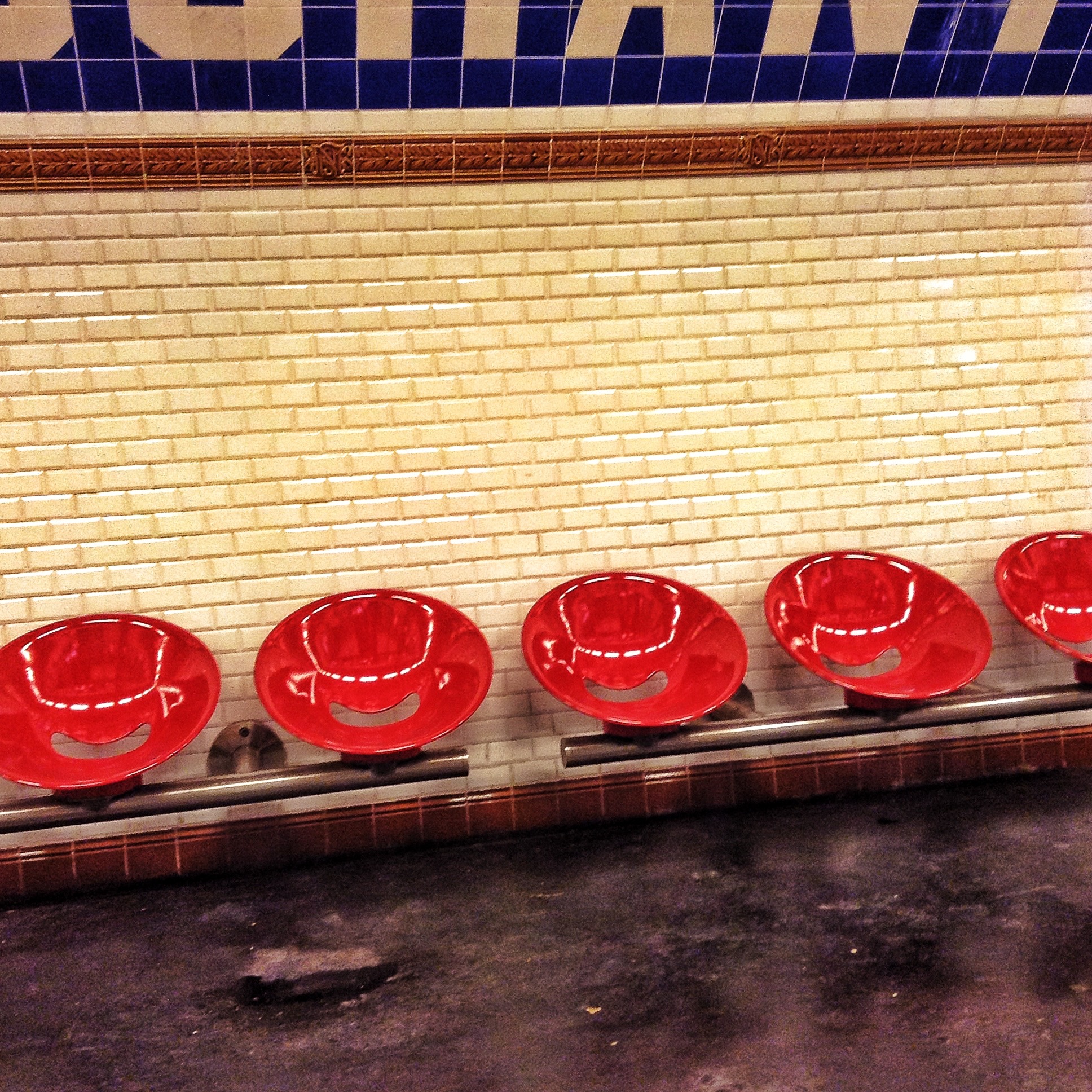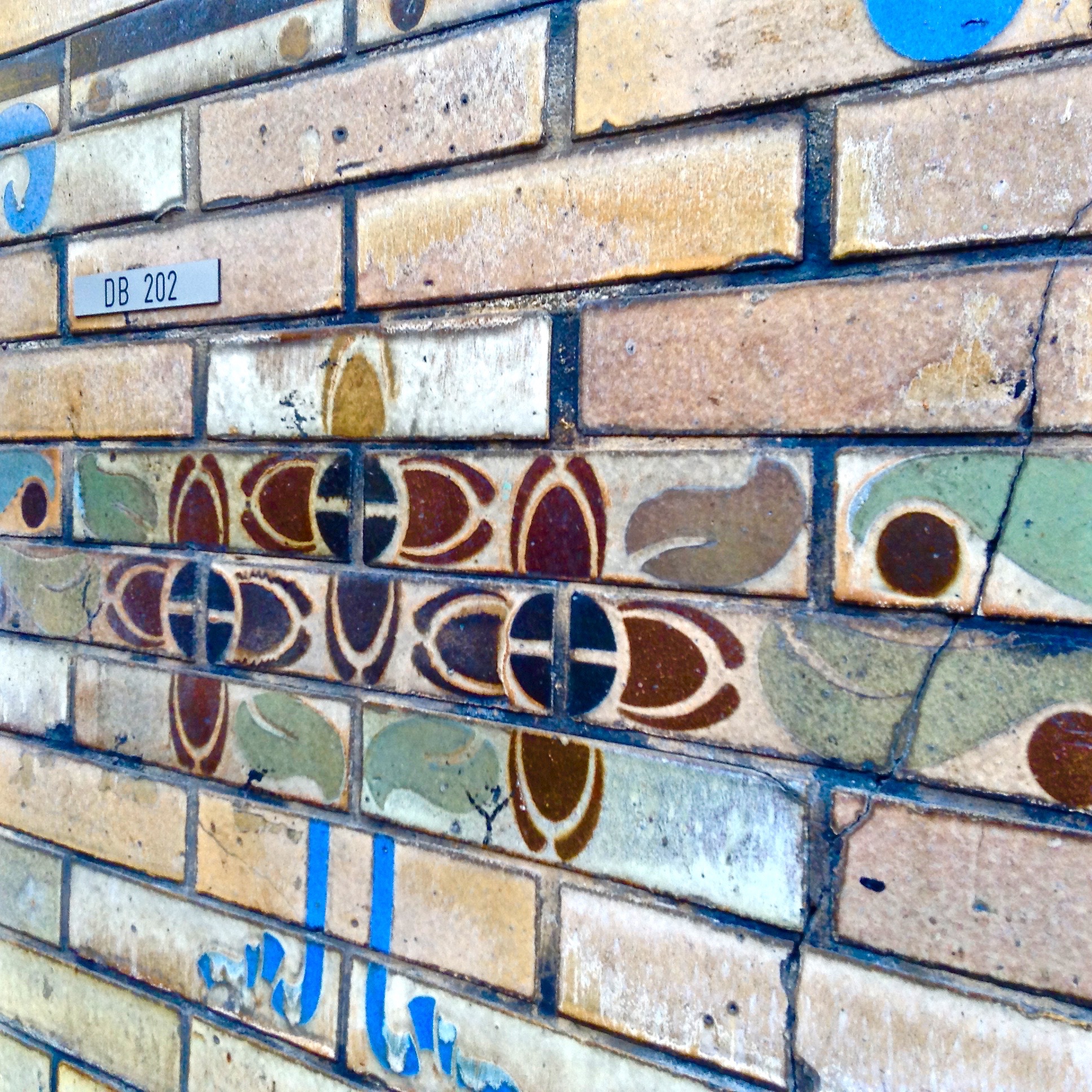A few years ago, I met a man who changed my life, wholly for the better. On first thougth, what he did for me seems banal, but . . . it’s the first thought that’s banal, not what he did for me.
He got me to walk barefoot.
The fellow is called John Woodward, and he’s an Alexander Technique teacher who has been walking barefoot, full-time, for several decades. Full-time means in all weather, all seasons, all restaurants, all professional settings, all all.
The way we met was interesting. We were attending a conference at an attractive university campus in Manchester, and we found ourselves together & alone at the threshold of the conference building. Our colleagues were inside, meeting and talking and quite possibly planning to save the world. But not the two of us; we were outside, we were outsiders. More precisely, we were liminal explorers, both of us in the habit of finding ourselves in between two worlds or two moments or two attitudes, in the frontier where the private becomes public (or vice versa), the unconscious crystalizes into an embodied insight (or vice versa), the material vibrates as energy (or vice versa). And also the liminal territory where alone becomes together.
Some months later, John wrote a piece about how we met, and he sent me his reading of it. I composed a soundtrack to it. If you suspect that John and I are deep into a bromance, you’re absolutely right.
Anyway, back in Manchester John and I started talking. Until then I had never met a full-time barefoot walker, but I quickly sensed that John was on to something. He was poised, entertaining, and incisive in his comments about . . . well, about the meaning of life.
But from now on I’m going to leave John out of this. I’d like to relate my explorations of barefoot walking over the past four years, and some of the things I’ve learned from doing it.
Self-portrait.
I was an awkward child, introverted and disembodied – the kind of boy who was always the last one chosen for the team in school sports, ack! Back then I was a boneless chicken, and every attempt at flight ended in a crash. By birth, my legs and feet were sort of rubbery and shapeless; by habit, I made them rubberier and more shapeless. I twisted my left ankle often, scraped my knees, and tore my trousers at the least challenge (crossing the street, for instance).
Fast forward to 2012, when I met John. It took a lot of work, but I’m not so disembodied anymore. The chicken got himself a backbone, and flies around the world pretending to be an eagle. The only thing is, the chicken is still a little complexed about his legs and feet. Left and right sides are imbalanced and asymmetrical; buying shoes is always a problem; feet are tender and kinda squashed; callouses pop up unbidden. And the left ankle has a permanent low-level inflammation – I mean, 24/7/365, except for leap years, when it’s 24/7/366.
Habit has a lawyer, arguing in its favor as a voice in your head. “Barefoot walking? No, no, not for you. You’ll hurt yourself, trip over, twist the ankle. You don’t want that, do you?” Oh, no, no; I don’t want that. But the voice of Barefoot John, now living inside my brain, overrode the lawyer, and I began exploring soon after coming home from Manchester.
I started slow and easy, and built it up over months and years. The first thing was to walk barefoot around the Place des Vosges, near my home in central Paris. I’d go to the Place wearing sandals and take them off once I was safely inside. Then, I’d walk as if on proverbial eggshells: Little stones! Twigs! Gravel! Those things hurt, man! My feet are tender, don’t you know that? After many trips to the Place, I had a breakthrough. In themselves, the little stones didn’t hurt. In fact, they weren't triggers of pain but packets of information; the pain was just my way of reading the information, or rather, mis-reading it on account of my preconceived ideas. Pain is what you make of it. It was a big deal to make the switch.
I would walk around the Place looking down at what I thought were the dangers littering the ground. I noticed that I pulled myself down in order to look down – as if I needed to “see the ground with my neck.” After a while I started “seeing with my eyes” and also “seeing with the soles of my feet,” and I became better able to walk upright and navigate the dangers (which in reality didn’t exist). That, too, was a big deal: To walk upright and alert makes the world less dangerous!
One day I walked back home barefoot, after my explorations at the Place des Vosges. And that, too, was a big deal: the first time I walked barefoot right in the city and not in a park or beach. It seemed daring to step as if naked on asphalt, on street puddles, on regular sidewalks.
Every few days or weeks there would be a “first time.” The first time I left the house barefoot, instead of waiting until I got to the Place des Vosges; the first time I left the house without taking sandals or shoes with me; the first time I rode the Paris metro barefoot; the first time I boarded an airplane barefoot; the first time I played a concert barefoot; the first rainy day; the first winter day; the first entire day in summer; the first entire day in winter.
I think “first times” are a big deal. I certainly remember the first kiss as a big deal, also the first time traveling by plane, the first time singing in public; and the first sushi dinner, the first computer, the first foreign country, the first return back home after a foreign trip . . . the list could go on endlessly. First times are exciting, but also nerve-wracking, nausea-making. It’s a wonderful thing. Barefoot walking is a constant rediscovery of first times.
Changes started happening. Obviously with the feet themselves, which gained shape, structure, strength, length, and width. Suddenly I had toes! With their own little joints! Holy cow! If you remember, I had a low-level permanent inflammation in my left ankle. It’s gone. I can hardly describe what it feels like when a chronic displeasure disappears. And the displeasure had existential and identity-bound dimensions; it was a sort of handicap, with its accompanying shame. Gone, gone, gone . . . and just because I took up barefoot walking.
Suppose some deep-seated problem of yours had a simple solution, except that the solution “looked funny.” I bet you might be inclined to prefer the problem to the solution. I believe it’s a universal tendency. At the very least it's certain that we often need to "stay in the problem" for a long time before deciding to "get out of the problem." I'm 58 years old.
Everyday someone approaches me, to ask a question or make a remark. Little kids can’t resist commenting to their parents, within my earshot. “That man is walking barefoot! Pourquoi, maman?” I talked to one such little kid. “Don’t you walk barefoot, too?” He answered, “Barefoot in the beach, shoes in the city, I learned.” One day at a supermarket, a security guard came over. “Le monsieur est à l’aise,” he said, wistfully. “The mister is comfortable.” He was African, and he told me that back home he walked barefoot all the time, but his Parisian job required shoes. He couldn’t find a comfortable pair of shoes, he was always in pain, his back hurt, his whole body suffered. And here I was, a Johnny-come-lately becoming a sort of reverse model for someone who considered his barefoot walking a birthright, now denied.
People ask to take my photo. A young man at Midway Airport in Chicago, friendly and eager. A cop at a street demonstration in Paris said, “My wife won’t believe me.” Everyone has the same three questions: “Aren’t you cold?” “Isn’t it dirty?” “Aren’t you afraid of broken glass?” And no one really believes me when I say, “I love it. I feel really good.”
Walking barefoot, I receive surges of energy; sometimes I feel like singing or shouting or speaking to myself or playacting or . . . expressing my joy in some way or another. And so it happens, that I walk barefoot in Paris, talking to myself and singing and speaking in tongues.
One sunny winter day I was going to my local café, for my morning writing session. I carried my laptop computer in a soft case, and nothing else. Two cops riding bicycles noticed me and stopped to address me. A young woman and a young man from Central Casting, slim and good-looking as only Parisian cops can be. From atop her bicycle, the woman led the conversation. “Aren't you cold?” she asked. And I could tell right away that she was making some calculations, trying to determine if I was homeless and perhaps in need of psychiatric help. “I’m comfortable, thank you. I make a habit of it.” You should see her face and her gaze . . . any one thing I said would feed her convictions. I wanted to laugh, to tell her, “Look! I’m carrying a computer!” (“He’s crazy.”) “I write books!” (“He really must be crazy.”) “My publisher! Oxford University Press! New York! (“He’s nuts.”) So I tried not to laugh and not to say much. “Aren’t you afraid of broken glass?” she asked. “You ride bicycles,” I answered. “Every year a handful of Parisian cyclists die in traffic. But I haven’t died of barefoot walking yet.” But I’m not sure she heard me. After five minutes we went our separate ways.
Walking barefoot makes you quite attentive to the environment. The risks of stepping on broken glass are much smaller than generally assumed, since you simply watch where you’re going. Regardless, you don’t take anything for granted when barefoot, but you do take things for granted when you wear shoes. I feel downright irresponsible with shoes on, disconnected, distracted. Plus, there are so many textures for your naked soles to detect and react to: concrete, earth, grass, sand, wood, asphalt, multiple types of stone. The wealth of sensorial information is astounding. Walking with shoes on is like watching the movies wearing a night mask and earplugs.
One tends to think of barefoot walking as what babies and children do at home, and as what adults do at the beach, where they become like children. Barefoot walking, in other words, is “childish.” But how do you explain the attentiveness, the suppleness, the strength, the structure, the courage, the responsible-ness, the nerve, the initiative, the control that come with barefoot walking? I’ve never felt so manly and integrated. I still have much work to do, of course; I don’t walk barefoot full-time, like my friend and brother John; not yet, anyway. But I can say that taking my shoes off, and my socks too, has been like a new birth. I’m now baby, boy, and man, all at the same time.
©2016, Pedro de Alcantara

